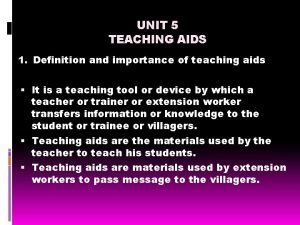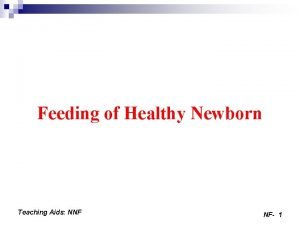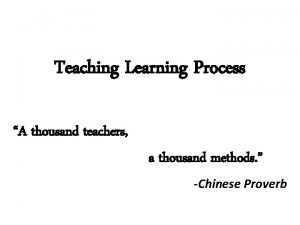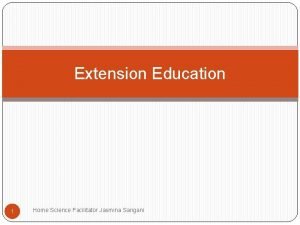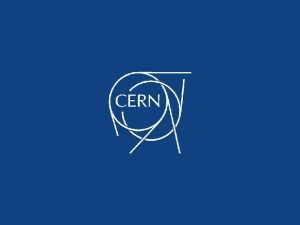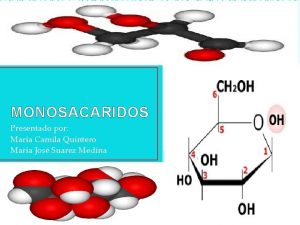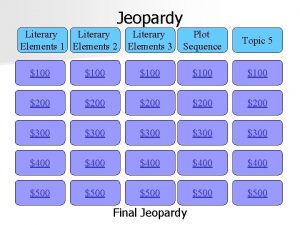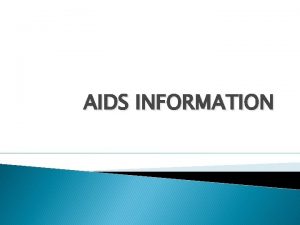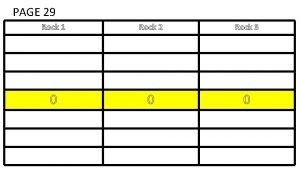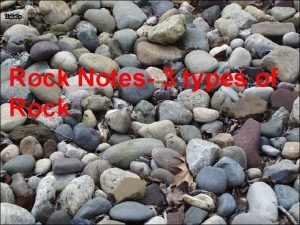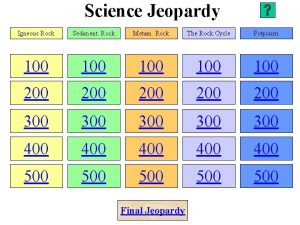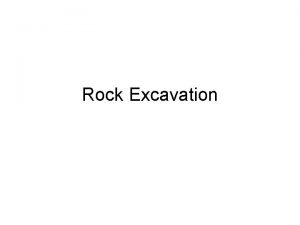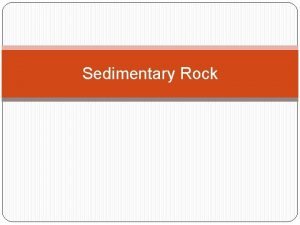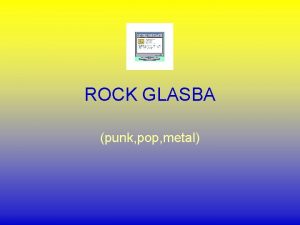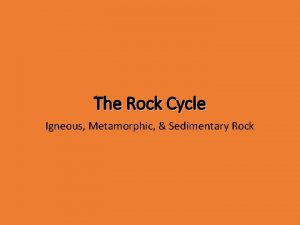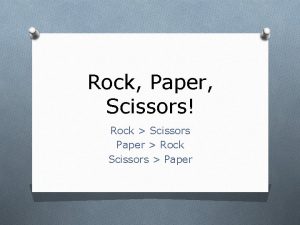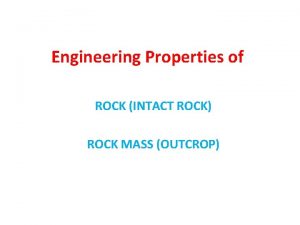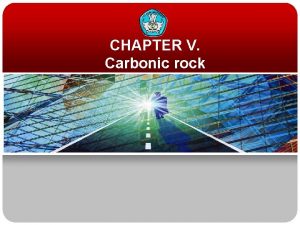LITERARY ELEMENTS Teaching Aids Claudia Rock LITERARY ELEMENTS




















- Slides: 20


LITERARY ELEMENTS Teaching Aids Claudia Rock

LITERARY ELEMENTS PLOT (dramatic & narrative structure): action; what happens SETTING: where; when CHARACTERIZATION: who is in the story THEME: meaning NARRATION: who tells the story POINT OF VIEW: omniscient; limited STYLE (diction & syntax): author’s choice and use of words

PLOT: DRAMATIC STRUCTURE (building of tension) climax: moment of greatest tension rising action: tension increases complication: conflict exposition: description of situation at beginning falling action: tension released dénouement or resolution: situation at end

PLOT: NARRATIVE STRUCTURE (order of events) reference to past event flashback foreshadowing hint of future event

PLOT: QUESTIONS (1) • What is the dramatic structure of this particular plot? - Is it a traditional or modern structure? - Are the events fast-moving or slow? - Is the reader’s interest engaged at the very beginning of the story or only later on? - Can the action be seen on more than one level? • In what ways is the dramatic structure of the plot effective? • What is the central conflict in the story? - Is it an internal or external conflict or both? • How is suspense or tension created by the plot?

PLOT: QUESTIONS (2) /… • How important is the plot to the story? - Does it play a central role or a minor one? - How is it interwoven with the characterization or setting? - What effect does the plot have on the main theme of the story? • What is the climax of the story? • Is the ending effective/suitable? • In what order do the events unfold in the story? Are they presented chronologically or non-chronologically?

SETTING (time and place) General setting: epoch, historical period, continent, etc. Specific setting: exactly where and when the story takes place External setting: outside a person Internal setting: inside the head of a character Settings often create mood (feeling, emotion connected with a scene) and atmosphere (general emotional tone of a work).

SETTING: QUESTIONS • Does the setting have a historical or geographical significance? • How important is the setting in the story? (major or minor) • How does the setting affect other aspects of the story, such as plot, characterization and theme? • How does the setting influence the mood and atmosphere of the story? • Is the setting believable to the reader? - Does it assist in establishing credibility? • Does the setting symbolize something? • Is the setting suggestive about the culture, the philosophy or the spirit of the times?

CHARACTERIZATION (Characters: people in story) Protagonist: main character Antagonist: person in conflict with main character Round or dynamic character: evolves, changes during story Flat character or static character: does not evolve Stereotype: flat predictable character, such as a typical hero: kind, blond, blue-eyed, handsome Characters are depicted through description, dialogue and actions.

CHARACTERIZATION: QUESTIONS • Who is the protagonist in the story? • Who or what is the antagonist? • What are the main actions of the protagonist and antagonist? • What are their character traits or personalities? • What methods does the writer use to depict characters? • Are the characters round or flat? • Who are the secondary characters? • What is their importance or relevance to the story? • Are the characters interesting and credible? • How do the setting and plot influence the characters?

THEME (meaning) Theme: underlying message or meaning The theme of a piece is a value statement, such as “Love is wonderful, ” “Growing old is difficult, ” etc. In other words, it is the expression of an opinion or a point of view. (not to be confused with the subject of a work: a general topic, such as “Love, ” “Growing old, ” etc. , in which no opinion is implied or expressed)

THEME: QUESTIONS • What is the work about? • What are the ideas and values demonstrated in the work? - Are these implied or explicitly stated? • Do all the other elements convey the same ideas and values? (Look at what the characters say and think. ) • Do the other elements (such as characters or setting) symbolize an idea? • Are the ideas and values universal? • Does the work contain any secondary themes? • In what ways do the secondary themes relate to the main theme?

NARRATION AND POINT OF VIEW (1) (how the story is told) Narrator: person or voice telling the story Point of view: perspective from which the story is told First person: narrator directly involved in a story; tells it using “I” (first-person singular narrator) or “we” (first-person plural) Third person: narrator not involved in a story; is only an observer; the story is told in the third person using “he, ” “she, ” “they”

NARRATION AND POINT OF VIEW (2) (how the story is told) …/ Omniscient point of view: narrator knows everything; is all-seeing and all-knowing - Objective: narrator reports only the facts - Intrusive: narrator offers opinions and judgements Limited point of view: narrator can only give incomplete information Multiple narrators: story told from several points of view Narration and point of view often affect how close the reader feels to the people and events in the story.

NARRATION AND POINT OF VIEW: QUESTIONS • Who is the narrator of the story? - Is there only one narrator or are there multiple narrators? • Is the narrator credible or reliable as an interpreter of the action? • How does the narrator have access to the information in the story? • Does the narrator have a positive or negative opinion of the characters? • What is the point of view of the work? • Is the story told from only one point of view or many points of view? • How does the point of view affect the reader’s sense of involvement in the story?

STYLE (1) (techniques of language usage) Diction: a writer’s (or a speaker’s) choice and use of words and the words’ characteristics Denotation: literal or dictionary meaning Connotation: associated or suggested meaning Level of concreteness: perceptible by the senses Level of abstractness: not perceptible by the senses but only by the mind Figures of speech: expressions used in a nonliteral way to create special effect or extend meaning Simile: comparison of two things using like or as Metaphor: implied comparison of two things without using like or as Personification: giving human qualities to inanimate or abstract objects

STYLE (2) Diction (cont’d) Imagery: descriptive word pictures appealing to one of the senses Irony: the opposite of what is intended, expected or expressed Rhythm: sound patterns Alliteration: repetition of the initial letter or sound in words Assonance: repetition of identical vowel sounds Consonance: repetition of identical consonant sounds Repetition of other sentence elements such as words and structure Level of language: language for a specific social setting Formal speech: conventional language that respects the rules Informal speech: everyday, unofficial language Slang: casual speech Use of dialogue: conversation between two characters

STYLE (3) (techniques of language usage) SYNTAX: the way in which the words, phrases and sentences are arranged Sentence length: long, short Word order: subject, verb, complement Sentence types: simple, compound, complex Diction and syntax contribute to tone or mood.

STYLE: QUESTIONS • What type of diction is found throughout the work? Consider the meaning of words in terms of their denotation and connotation. • Are the words concrete or abstract? • Is the language formal or informal? Slang or dialect? • What are the figurative devices such as similes, metaphors, etc. ? • How does the writer use imagery? • Is there a particular sound to the language, accomplished by the use of repetition, alliteration, assonance or consonance? • What types of sentences are found in the work? - What is their length? • Does the sentence structure vary or is it always the same? • What is the overall tone or atmosphere of the work? • How is this tone or atmosphere created?
 How does a igneous rock become a metamorphic rock
How does a igneous rock become a metamorphic rock Definition of teaching aids
Definition of teaching aids Audio learning resources
Audio learning resources Prelacteal feed
Prelacteal feed A thousand teachers a thousand methods meaning
A thousand teachers a thousand methods meaning Teaching aids examples
Teaching aids examples Rock cycle sedimentary
Rock cycle sedimentary Compaction and cementation
Compaction and cementation Bungee climbing
Bungee climbing Chapter 3 standardized test practice answers
Chapter 3 standardized test practice answers A rock climber's shoe loosens a rock and her climbing buddy
A rock climber's shoe loosens a rock and her climbing buddy Explain the rock cycle
Explain the rock cycle Poetic techniques
Poetic techniques Micro teach meaning
Micro teach meaning Claudia hauff
Claudia hauff Wildlife protection force wow
Wildlife protection force wow Mariko claudia
Mariko claudia Claudia battistelli
Claudia battistelli Instituto galileo galilei montequinto
Instituto galileo galilei montequinto Claudia schulte
Claudia schulte Camila blando y claudia quintero
Camila blando y claudia quintero

